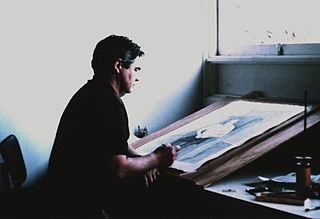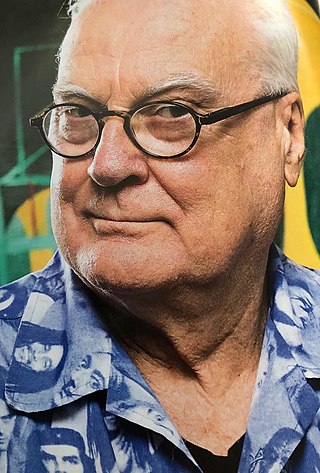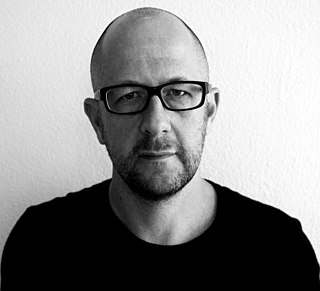
The National Gallery of Victoria, popularly known as the NGV, is an art museum in Melbourne, Victoria, Australia. Founded in 1861, it is Australia's oldest and most visited art museum.

John Brack was an Australian painter, and a member of the Antipodeans group. According to one critic, Brack's early works captured the idiosyncrasies of their time "more powerfully and succinctly than any Australian artist before or since. Brack forged the iconography of a decade on canvas as sharply as Barry Humphries did on stage."
Robert Jacks was an award-winning Australian painter, sculptor and printmaker and acknowledged as one of Australia's leading abstract artists.
The John McCaughey Prize, also known as the John McCaughey Memorial Art Prize, McCaughey Prize, McCaughey Art Prize or McCaughey Art Award, is an Australian art prize awarded to an artist or artists, under which the National Gallery of Victoria and the Art Gallery of New South Wales acquire work by the winning artist.

Gareth Sansom is an Australian artist, painter, printmaker and collagist and winner of the 2008 John McCaughey Memorial Prize of $100,000.

Matthew Sleeth is an Australian visual artist and filmmaker. His often collaborative practice incorporates photography, film, sculpture and installation with a particular focus on the aesthetic and conceptual concerns of new media. The performative and photographic nature of media art is regularly highlighted in his work.

Vaughan Murray Griffin was an Australian print maker and painter.
Fred Fowler is an Australian-born visual artist, specialising in painting, drawing, bronze sculpture and printmaking.
Robert Rooney (1937–2017) was an artist and art critic from Melbourne, Australia, and a leading figure in Australian Conceptual art.
Peter Sebastian Graham is a contemporary Australian artist, painter, printmaker and sculptor. He was born in 1970 in Sydney, New South Wales. He moved with his family in 1983 to Melbourne, Victoria, where he currently lives and works.
Andrew John Sibley was an English-born Australian artist. Sibley has been the subject of three books and is commonly listed in histories and encyclopedias of Australian art as a significant figurative painter of the mid and late 20th century.
Pam Hallandal was an Australian artist, best known for her work in drawing and print making.
Julie Gough is an artist, writer and curator based in Tasmania, Australia.
Janet Burchill is an Australian contemporary artist. She is known for her work across multiple disciplines such as painting, sculpture, installation, film, and her continued collaboration with Jennifer McCamley since the mid-1980s. Notably, Burchill's work has been collected and included in the Cruthers Collection of Women's Art.
Elizabeth Gower is an Australian abstract artist who lives and works in Melbourne. She is best known for her work in paper and mixed-media monochrome and coloured collages, drawn from her sustained practice of collecting urban detritus.
Mel O'Callaghan is an Australian-born contemporary artist who works in video, performance, sculpture, installation, and painting. Her work has been exhibited in solo and group exhibitions around the world and received a number of awards for her artistic practice, and her work is held in a various collections in Australia and France.
Jan Nelson is an Australian artist who works in sculpture, photography and painting. She is best known for her hyper real images of adolescents. She has exhibited widely in Australia as well as Paris and Brazil. Her works are in the collections of Australian galleries, including the National Gallery of Australia, National Gallery of Victoria, Art Gallery of New South Wales, Museum of Contemporary Art, Sydney and the Gallery of Modern Art Brisbane, as well as major regional galleries. She represented Australia in the XXV biennale in São Paulo, Brazil.
Angela Cavalieri is an Australian printmaker, whose work recreates text and narratives in visual form and was included in the Venice Biennale, 2011.

Simone LeAmon is an Australian designer, artist and curator. LeAmon is currently the inaugural Hugh D.T Williamson Curator of Contemporary Design and Architecture at the National Gallery of Victoria, Melbourne and an Adjunct Professor, Design and Social Context, RMIT University, Melbourne.
Kate Daw (1965-2020) was an Australian visual artist and former Head of Art at the Victorian College of the Arts in Melbourne.






